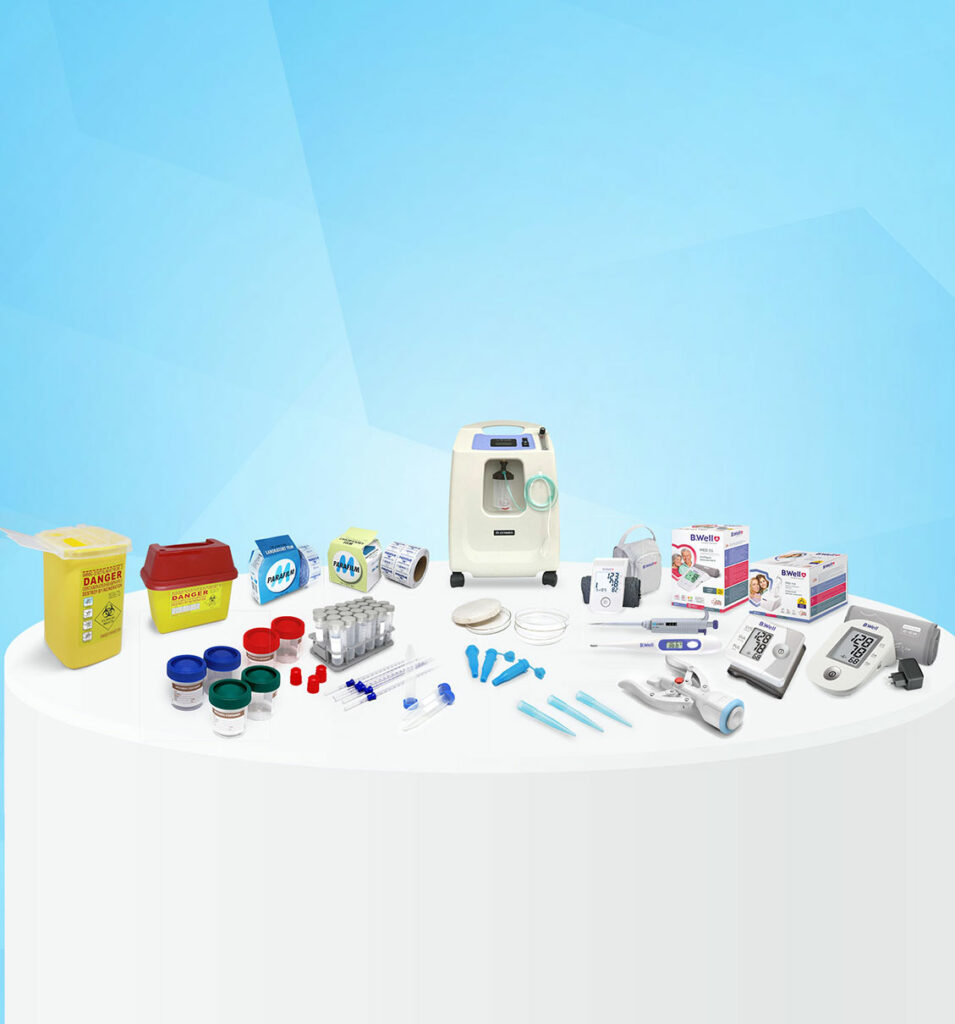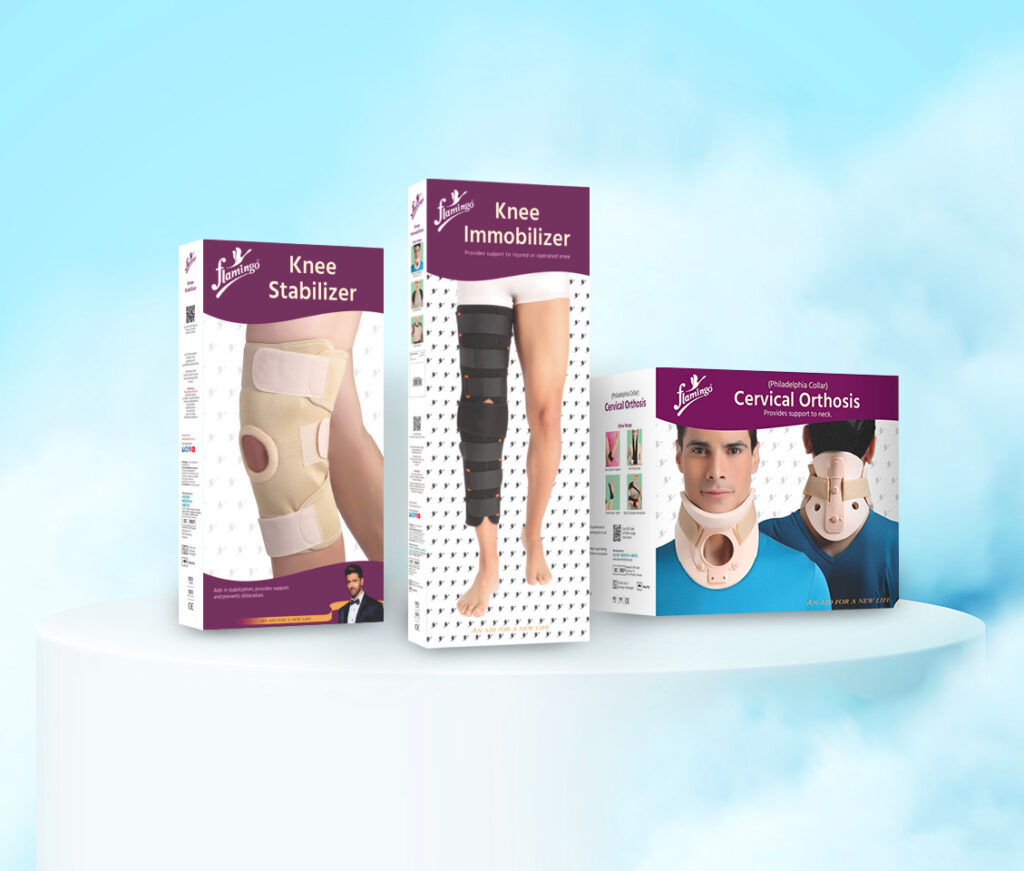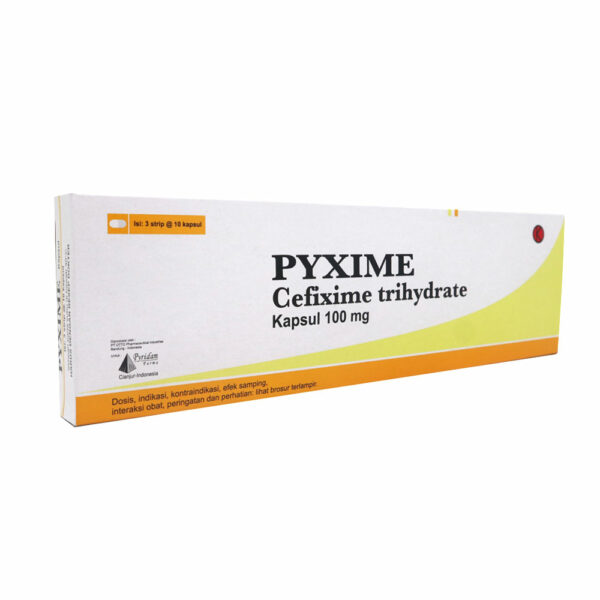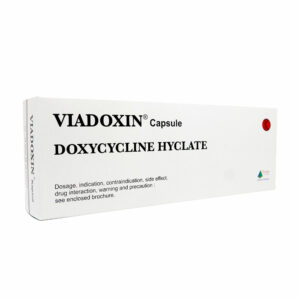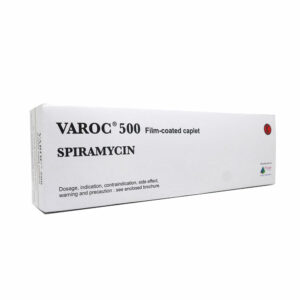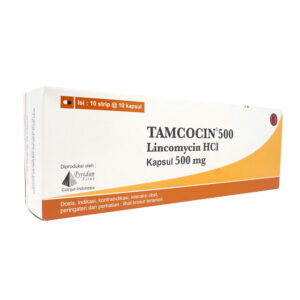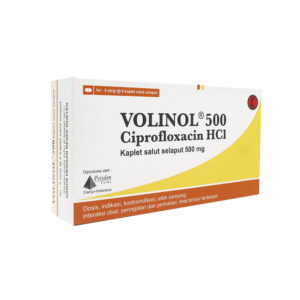Description
Composition
Each capsule contains : Cefixime 100 mg (potency).
Pharmacology
Antibacterial activity
Cefixime has broad-spectrum activity against gram-positive and negative microorganisms . In particular, in comparison with
the other oral cephalosporins, it has potent activity against such gram-positive organisms as Streptococcus sp., Streptococcus
pneumoniae, and such gram-negatives as Branhamella catarrhalis, Escherichia coli, Proteus sp., Haemophillus influenzae. Its
mode of action is bactericidal. It is extremely stable to β-lactamase produced by many organisms , and has good activity
against β-lactamase producing organism .
Mode of action
Its mode of action is inhibition of cell wall synthesis. It has high affinity for penicillin binding proteins (PBP) 1 (1a, 1b and 1c)
and 3, with the site of activity varying according to organism.
Pharmacokinetics
Serum concentration
Following a single oral dose of 100 of Cefixime in healthy, fasted adults, maximum serum concentrations at 4 hours were,
respectively 1.13 μg/ml. The serum half-life was 2.3 – 2.5 hours.
Following a single oral dose of 1.5, 3.0 or 6.0 mg (potency)/kg of Cefixime in pediatric patients with normal renal function,
maximum serum concentrations at 3 – 4 hours were, respectively, 1.14, 2.01 and 3.97 μg/ml. The serum half-life was 3.2 –
3.7 hours.
Tissue penetration (distribution)
Penetration into sputum, tonsils, maxillary sinus mucosal tissue, otorrhea, biliary fluid and gall-bladder tissue is good.
Metabolism
No antibacterially active metabolites are found in the human serum or urine.
Excretion
Cefixime is excreted primarily renally. The extent of urinary excretion (up to 12 hours) after oral administration of 50, 100 or
200 mg (potency) in healthy, fasted adults was about 20-25 %. Maximum urine concentrations were, respectively, 42.9, 62.2
and 82,7 μg/ml at 4 – 6 hours. The extent of urinary excretion (up to 12 hours) after oral administration of 1.5, 3.0 or 6.0 mg
(potency) / kg in pediatric patients with normal renal function was about 13 – 20 %.
Indications
Uncomplicated Urinary Tract Infections caused by Escherichia coli and Proteus mirabilis.
Otitis media caused by Haemophillus influenzae ( Beta-laktamase positive and negative strains ), Moraxella (
Branhamella ) catarrhalis ( most of which are betalactamase positive ), and Streptococcus pyogenes.
Pharyngitis and Tonsilitis, caused by Streptococcus pyogenes.
Acute Bronchitis and Acute Exacerbations of Chronic Bronchitis, caused by Streptococcus pneumoniae and Haemophillus
influenzae ( beta-lactamase positive and negative strains ).
Treatment of typhoid fever in children, with multi-resistant to the standard drug regiments.
Contraindications
Patients with a history of shock or hypersensitivity caused by any ingredient of this product.
Dosage and Administration
For adults and children weighing > 30 kg, the usual recommended daily dose is 50 – 100 mg (potency) of cefixime given orally
twice daily. Dosage should be adjusted according to the age, body weight and condition of the patient. For more severe or
intractable infections, the dosage may be increased up to 200 mg (potency) given twice daily.
Typhoid fever in children : 10 – 15 mg / kg / day for 2 weeks.
Patients with impaired renal function require modification of dosage depending on the degree of impairment. The
recommended dosage is 75 % of the standard dosage (i.e. 300 mg daily) when creatinine clearance is between 21 and
60 ml / min or for patients on renal hemodialysis, and 50 % of the standard dosage (i.e.200 mg daily) when creatinine
clearance is less than 20 ml / min or for patients on continuous ambulatory peritoneal dialysis.
In case of over dosage :
Gastric lavage may be indicated ; otherwise, no specific antidote exists. Cefixime is not removed in significant
quantities from the circulation by hemodialysis or peritoneal dialysis.
Adverse Reactions
Shock
Adequate caution in administration should be used as shock symptoms may rarely occur. If any related
signs or symptoms such as feeling unwell, oral cavity discomfort, stridor, dizziness, abnormal urge to defecate,
tinnitus or diaphoresis occur, this product must be discontinued immediately.
Hypersensitivity
If signs of hypersensitivity reactions such as rash, urticaria, erythema, pruritus or fever occur, this product should be
discontinued and appropriate measures should be taken.
Hematologic
Granulocytopenia or eosinophilia infrequently may occur. Rarely thrombocytopenia may occur. This product should be
discontinued if any of these abnormalities is found. It has been reported that hemolytic anemia has occurred with
other cephems.
Hepatic
Infrequently an increase in GOT, GPT or alkaline phosphatase may occur.
Renal
Periodic monitoring of renal function is recommended as serious renal impairment such as acute renal insufficiency may
rarely occur. If any of these abnormalities is found, discontinuation of this product and other appropriate measures
should be taken.
Digestive
In rare instances a serious colitis, such as pseudomembranous colitis, manifested by blood in stools, may occur.
Abdominal pain or frequent diarrhoea requires appropriate measures, including prompt withdrawal of this product
infrequently vomiting, diarrhea, abdominal pain, stomach discomfort, heartburn or anorexia, and rarely nausea, feeling
of enlarged abdomen or constipation may occur.
Respiratory
In rare instances, interstitial pneumoniae or PIE syndrome, manifested by fever, cough, dyspnea, abnormal chest x-ray
or eosinophilia, may occur, If any such symptoms occur, this product should be immediately discontinued and
appropriate measures such as giving adrenocortical hormones should be taken.
Alteration in bacterial flora
Rarely stomatitis or candidiasis may occur
Vitamin deficiencies
Rarely vitamin K deficiencies (such as hypothrombinemia or bleeding tendencies) or vitamin B group deficiencies ( such
as glossitis, stomatitis, anorexia or neuritis ) may occur.
Others
Rarely headache or dizziness may occur.
In studies where infants rats were given 1.000 mg/kg/day orally, a reduced spermatogenesis was reported.
Influences on laboratory values
False-positive results may occur with urine sugar tests using Benedict’s solution, Fehling’s solution and Clinitest.
False positives have not been reported with Testape.
A positive direct Coombs test may occur.
Precautions
General Precautions : Careful inquiry about any form of hypersensitivity should be made, since reactions such as shock
may occur.
This product should not be administered to the following patients as a general rule.
If necessary, however, it can be administered with care.
Patients with a past history of hypersensitivity to any of ingredients in this product or any other cephem antibiotics.
Careful Administration :
Patients with a history of hypersensitivity to penicilins.
Patients with a personal or familial history of some form of allergy such as bronchial asthma, rash, urticaria.
Patients with serious renal functions disorder.
Patients with poor oral nutrition, patients receiving parenteral nutrition, elderly patients or patients in a
debilitated state ; Careful observation is essential in these patients as vitamin K deficiency symptoms may
develop.
Use during Pregnancy
Safety during pregnancy has not been established. This product should be administered to pregnant patients or women
suspected of being pregnant, only if the expected therapeutic benefit is thought to outweigh any possible risk.
Use in Nursing Mother
It is not known whether Cefixime is excreted in human milk. Consideration should be given to discontinuing nursing
temporarily during treatment with this drug.
Use in Newborns or Prematures
Efficacy and safety in children aged less than 6 months have not been established ( including in newborn and
prematures )
Presentation
Capsule 100 mg : Box of 3 strips x 10 capsules
Each capsule contains : Cefixime 100 mg (potency).
Pharmacology
Antibacterial activity
Cefixime has broad-spectrum activity against gram-positive and negative microorganisms . In particular, in comparison with
the other oral cephalosporins, it has potent activity against such gram-positive organisms as Streptococcus sp., Streptococcus
pneumoniae, and such gram-negatives as Branhamella catarrhalis, Escherichia coli, Proteus sp., Haemophillus influenzae. Its
mode of action is bactericidal. It is extremely stable to β-lactamase produced by many organisms , and has good activity
against β-lactamase producing organism .
Mode of action
Its mode of action is inhibition of cell wall synthesis. It has high affinity for penicillin binding proteins (PBP) 1 (1a, 1b and 1c)
and 3, with the site of activity varying according to organism.
Pharmacokinetics
Serum concentration
Following a single oral dose of 100 of Cefixime in healthy, fasted adults, maximum serum concentrations at 4 hours were,
respectively 1.13 μg/ml. The serum half-life was 2.3 – 2.5 hours.
Following a single oral dose of 1.5, 3.0 or 6.0 mg (potency)/kg of Cefixime in pediatric patients with normal renal function,
maximum serum concentrations at 3 – 4 hours were, respectively, 1.14, 2.01 and 3.97 μg/ml. The serum half-life was 3.2 –
3.7 hours.
Tissue penetration (distribution)
Penetration into sputum, tonsils, maxillary sinus mucosal tissue, otorrhea, biliary fluid and gall-bladder tissue is good.
Metabolism
No antibacterially active metabolites are found in the human serum or urine.
Excretion
Cefixime is excreted primarily renally. The extent of urinary excretion (up to 12 hours) after oral administration of 50, 100 or
200 mg (potency) in healthy, fasted adults was about 20-25 %. Maximum urine concentrations were, respectively, 42.9, 62.2
and 82,7 μg/ml at 4 – 6 hours. The extent of urinary excretion (up to 12 hours) after oral administration of 1.5, 3.0 or 6.0 mg
(potency) / kg in pediatric patients with normal renal function was about 13 – 20 %.
Indications
Uncomplicated Urinary Tract Infections caused by Escherichia coli and Proteus mirabilis.
Otitis media caused by Haemophillus influenzae ( Beta-laktamase positive and negative strains ), Moraxella (
Branhamella ) catarrhalis ( most of which are betalactamase positive ), and Streptococcus pyogenes.
Pharyngitis and Tonsilitis, caused by Streptococcus pyogenes.
Acute Bronchitis and Acute Exacerbations of Chronic Bronchitis, caused by Streptococcus pneumoniae and Haemophillus
influenzae ( beta-lactamase positive and negative strains ).
Treatment of typhoid fever in children, with multi-resistant to the standard drug regiments.
Contraindications
Patients with a history of shock or hypersensitivity caused by any ingredient of this product.
Dosage and Administration
For adults and children weighing > 30 kg, the usual recommended daily dose is 50 – 100 mg (potency) of cefixime
given orally twice daily. Dosage should be adjusted according to the age, body weight and condition of the patient. For
more severe or intractable infections, the dosage may be increased up to 200 mg (potency) given twice daily.
Typhoid fever in children : 10 – 15 mg / kg / day for 2 weeks.
Patients with impaired renal function require modification of dosage depending on the degree of impairment. The
recommended dosage is 75 % of the standard dosage (i.e. 300 mg daily) when creatinine clearance is between 21 and
60 ml / min or for patients on renal hemodialysis, and 50 % of the standard dosage (i.e.200 mg daily) when creatinine
clearance is less than 20 ml / min or for patients on continuous ambulatory peritoneal dialysis.
In case of over dosage :
Gastric lavage may be indicated ; otherwise, no specific antidote exists. Cefixime is not removed in significant
quantities from the circulation by hemodialysis or peritoneal dialysis.
Adverse Reactions
Shock
Adequate caution in administration should be used as shock symptoms may rarely occur. If any related
signs or symptoms such as feeling unwell, oral cavity discomfort, stridor, dizziness, abnormal urge to defecate,
tinnitus or diaphoresis occur, this product must be discontinued immediately.
Hypersensitivity
If signs of hypersensitivity reactions such as rash, urticaria, erythema, pruritus or fever occur, this product should be
discontinued and appropriate measures should be taken.
Hematologic
Granulocytopenia or eosinophilia infrequently may occur. Rarely thrombocytopenia may occur. This product should be
discontinued if any of these abnormalities is found. It has been reported that hemolytic anemia has occurred with
other cephems.
Hepatic
Infrequently an increase in GOT, GPT or alkaline phosphatase may occur.
Renal
Periodic monitoring of renal function is recommended as serious renal impairment such as acute renal insufficiency may
rarely occur. If any of these abnormalities is found, discontinuation of this product and other appropriate measures
should be taken.
Digestive
In rare instances a serious colitis, such as pseudomembranous colitis, manifested by blood in stools, may occur.
Abdominal pain or frequent diarrhoea requires appropriate measures, including prompt withdrawal of this product
infrequently vomiting, diarrhea, abdominal pain, stomach discomfort, heartburn or anorexia, and rarely nausea, feeling
of enlarged abdomen or constipation may occur.
Respiratory
In rare instances, interstitial pneumoniae or PIE syndrome, manifested by fever, cough, dyspnea, abnormal chest x-ray
or eosinophilia, may occur, If any such symptoms occur, this product should be immediately discontinued and
appropriate measures such as giving adrenocortical hormones should be taken.
Alteration in bacterial flora
Rarely stomatitis or candidiasis may occur
Vitamin deficiencies
Rarely vitamin K deficiencies (such as hypothrombinemia or bleeding tendencies) or vitamin B group deficiencies ( such
as glossitis, stomatitis, anorexia or neuritis ) may occur.
Others
Rarely headache or dizziness may occur.
In studies where infants rats were given 1.000 mg/kg/day orally, a reduced spermatogenesis was reported.
Influences on laboratory values
False-positive results may occur with urine sugar tests using Benedict’s solution, Fehling’s solution and Clinitest.
False positives have not been reported with Testape.
A positive direct Coombs test may occur.
Precautions
General Precautions : Careful inquiry about any form of hypersensitivity should be made, since reactions such as shock
may occur.
This product should not be administered to the following patients as a general rule.
If necessary, however, it can be administered with care.
Patients with a past history of hypersensitivity to any of ingredients in this product or any other cephem antibiotics
Careful Administration :
Patients with a history of hypersensitivity to penicilins.
Patients with a personal or familial history of some form of allergy such as bronchial asthma, rash, urticaria.
Patients with serious renal functions disorder.
Patients with poor oral nutrition, patients receiving parenteral nutrition, elderly patients or patients in a
debilitated state ; Careful observation is essential in these patients as vitamin K deficiency symptoms may
develop.
Use during Pregnancy
Safety during pregnancy has not been established. This product should be administered to pregnant patients or women
suspected of being pregnant, only if the expected therapeutic benefit is thought to outweigh any possible risk.
Use in Nursing Mother
It is not known whether Cefixime is excreted in human milk. Consideration should be given to discontinuing nursing
temporarily during treatment with this drug.
Use in Newborns or Prematures
Efficacy and safety in children aged less than 6 months have not been established ( including in newborn and
prematures )
Presentation
Capsule 100 mg : Box of 3 strips x 10 capsules


